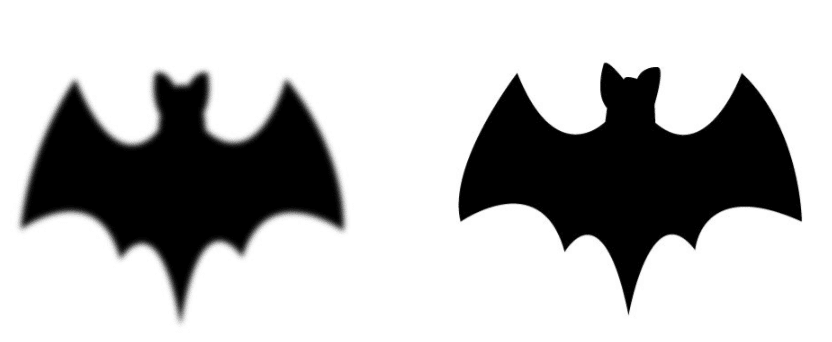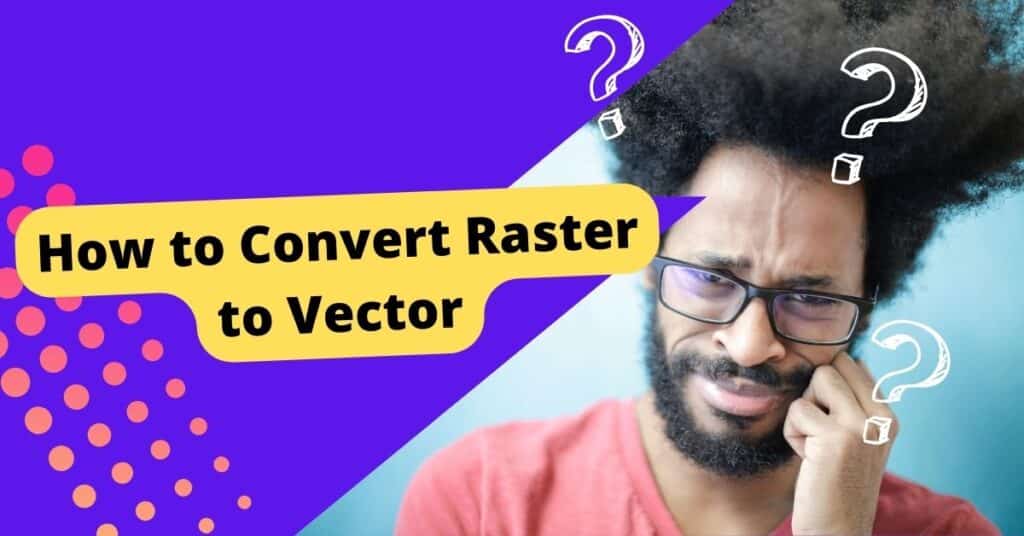How to Convert Raster to Vector
Brief Explanation of Raster and Vector Images
In the realm of digital graphics, two primary image types prevail—raster and vector. Raster images, composed of pixels, excel at capturing intricate details but may suffer quality loss when resized. On the flip side, vector images, comprising mathematical paths, ensure scalability without compromising clarity. Understanding these distinctions lays the foundation for comprehending the significance of converting raster to vector.
Importance of Converting Raster to Vector
The conversion from raster to vector holds immense importance in various industries. Vector images offer advantages like infinite scalability and editability, making them indispensable for graphic designers, architects, and illustrators. Moreover, the conversion process enhances image quality, ensuring that graphics remain sharp and detailed regardless of size or application.
Overview of the Conversion Process
The conversion process itself is a pivotal aspect of modern graphic design and digital imaging. It involves transforming raster images into vector format, providing versatility and flexibility in usage. Whether for professional graphics or personal projects, understanding the conversion process empowers creators to elevate the quality and adaptability of their visual content.
Target Keyword and Variations Included Naturally
In this comprehensive guide on how to convert raster to vector, the target keyword and its variations are seamlessly integrated throughout the content. This ensures that search engines recognize the relevance of the article to users seeking insights into raster to vector conversion. As we delve into the details, you’ll find practical guidance and valuable tips, all aligned with the central theme of this essential graphic design process.
Understanding Raster and Vector Images
Definition and Characteristics of Raster Images
Raster images, also known as bitmap images, are composed of pixels—tiny individual dots that together form a complete picture. Each pixel contains specific color information, collectively creating the visual representation. The defining characteristic of raster images is their resolution dependency, meaning that altering the size may result in a loss of quality. Photographs and detailed graphics often find their home in the raster format.
Definition and Characteristics of Vector Images
On the other side of the spectrum, vector images are based on mathematical equations and geometric shapes. Unlike raster images, vectors are resolution-independent, enabling them to scale infinitely without degradation. Each element in a vector graphic is defined by its mathematical properties, allowing for precise and sharp renderings. Logos, icons, and illustrations commonly leverage the advantages of vector formats.
Pros and Cons of Each Image Type
Both raster and vector images come with their unique set of advantages and limitations. Raster images excel in capturing intricate details, providing a realistic representation of photographs. However, they struggle when resized or manipulated extensively. In contrast, vector images are ideal for designs requiring scalability and flexibility but may lack the intricate detailing seen in raster counterparts. Balancing these pros and cons is crucial for choosing the right format based on specific project requirements.
When to Use Raster or Vector Images
The decision to use raster or vector images depends on the context and purpose of the graphic. Raster images are preferable for realistic visuals, such as photographs, where intricate details matter most. On the other hand, vector images shine in scenarios demanding scalability, like logos and icons. Understanding the strengths and weaknesses of each image type empowers creators to make informed choices based on the desired outcome of their projects.

Why Convert Raster to Vector?
Benefits of Vector Images Over Raster Images
Understanding the benefits of converting raster to vector sheds light on the advantages vector images bring to the table. Vector graphics offer unparalleled scalability without sacrificing image quality. This means that whether displayed on a small business card or a large billboard, the visual integrity remains intact. Additionally, vectors allow for easy editing, making them a preferred choice for designers seeking flexibility in their creative process.
Common Scenarios Where Conversion is Necessary
The necessity to convert raster to vector arises in various scenarios where the limitations of raster images become apparent. Logos, illustrations, and graphics intended for resizing or adaptation benefit significantly from vectorization. In design projects requiring precision and versatility, such as creating a logo for a business with diverse marketing needs, conversion becomes a crucial step.
Impact on Image Quality and Scalability
The impact of converting raster to vector is most evident in the enhancement of image quality and scalability. Vector images maintain sharpness and clarity regardless of size, eliminating the risk of pixelation that often plagues enlarged raster graphics. This ensures that the final output, whether printed or displayed digitally, consistently reflects the intended visual integrity.
Real-World Examples of the Need for Conversion
Real-world examples underscore the practical applications of raster to vector conversion. Consider a company logo that needs adaptation for various marketing materials—brochures, banners, and digital platforms. Vectorizing the logo ensures a consistent and professional look across diverse mediums. Such examples showcase the relevance and necessity of conversion
Tools for Raster to Vector Conversion
Overview of Popular Conversion Software
When delving into how to convert raster to vector, having the right tools at your disposal is crucial. Several popular conversion software options dominate the market, each offering unique features and capabilities. Adobe Illustrator, CorelDRAW, and Inkscape are among the widely recognized tools known for their efficiency in transforming raster images into scalable vector graphics.
Comparison of Features and Capabilities
Choosing the right software involves a careful comparison of features and capabilities. Adobe Illustrator, a industry-standard tool, boasts advanced vectorization algorithms and seamless integration with other Adobe Creative Cloud applications. CorelDRAW, known for its intuitive interface, offers powerful vector editing tools. Inkscape, as a free and open-source option, provides accessibility and versatility. Evaluating these features helps users make informed decisions based on their specific conversion requirements.
Step-by-Step Guide on Using Selected Tools
Understanding how to use these tools is essential for a successful raster to vector conversion. A step-by-step guide, tailored to the selected software, ensures a smooth workflow. From importing the raster image to adjusting vectorization settings and refining details, a comprehensive guide simplifies the conversion process. Users, whether beginners or experienced designers, can follow these detailed steps to achieve optimal results.
Tips for Choosing the Right Tool for Specific Needs
Selecting the right tool for raster to vector conversion depends on specific project needs. Consider factors such as the complexity of the image, desired level of customization, and budget constraints. Adobe Illustrator might be ideal for intricate designs requiring precision, while Inkscape offers a budget-friendly solution without compromising functionality. Tips for making this decision empower users to choose a tool that aligns perfectly with their unique conversion requirements.

Step-by-Step Process of Conversion
Preparing the Raster Image for Conversion
The journey of how to convert raster to vector starts with meticulous preparation. Before diving into the conversion process, ensure the raster image is optimized. Cleanse the image of unnecessary elements, enhance contrasts, and consider resizing for a more efficient vectorization process. This preparatory step lays the groundwork for a smoother transition from raster to vector.
Importing the Image into the Chosen Tool
Once the raster image is primed, the next step involves importing it into the selected conversion tool. This can be Adobe Illustrator, CorelDRAW, or Inkscape, depending on your preference and project requirements. Familiarize yourself with the import functions of your chosen tool to seamlessly bring the raster image into the vector environment.
Adjusting Settings and Parameters
Precision is key during the raster to vector conversion process. Adjust settings and parameters in your chosen tool to tailor the vectorization process to your specific needs. Fine-tune options such as color threshold, smoothing, and detail preservation to achieve optimal results. This step ensures that the vectorized image meets the desired standards of quality and accuracy.
Executing the Conversion Process
With preparations complete and settings in place, execute the actual conversion process. Watch as the tool transforms the raster image into a vector graphic. The duration of this step varies based on the complexity and size of the original image. Patience during this stage ensures a successful conversion, maintaining the integrity and clarity of the visual content.
Tips and Best Practices
Maintaining Image Quality During Conversion
One crucial aspect of how to convert raster to vector lies in preserving image quality throughout the conversion process. To achieve this, choose a high-resolution source image and avoid excessive resizing before conversion. Adjust settings in the conversion tool to balance detail retention and smoothness. This meticulous approach ensures that the vectorized image maintains the clarity and sharpness of the original raster graphic.
Handling Complex or Detailed Images
When dealing with complex or highly detailed images, take extra care to optimize the conversion process. Adjust the vectorization settings to capture intricate details without overwhelming the software. Consider breaking down complex images into manageable sections for more precise conversion. This strategic approach enhances the likelihood of successfully transforming intricate designs into high-quality vector graphics.
Dealing with Color Variations
Addressing color variations is a crucial aspect of raster to vector conversion. Tools like Adobe Illustrator and CorelDRAW offer color adjustment features during the conversion process. Harmonize color variations by fine-tuning settings to create a cohesive and accurate vector representation. This practice ensures that the color integrity of the original image is maintained in the vectorized version, contributing to a visually pleasing final result.
Ensuring Accurate Vectorization Results
Achieving accurate vectorization results requires attention to detail and a comprehensive understanding of the conversion tool’s capabilities. Adjust threshold settings to balance between capturing details and avoiding noise. Regularly check the progress during conversion to catch any inaccuracies or inconsistencies. This hands-on approach guarantees that the vectorized output aligns closely with the intended design, meeting the highest standards of accuracy and precision.

Common Challenges and Solutions
Issues with Automated Conversion
Automated conversion processes, while efficient, may encounter challenges such as misinterpretation of intricate details or misalignment. To overcome this, consider combining automated tools with manual intervention. Regularly review the progress and intervene when necessary, ensuring a balance between automation and manual refinement to achieve optimal results in the raster to vector conversion process.
Manual Touch-Ups and Refinement
Despite advanced conversion tools, manual touch-ups and refinement often play a crucial role in perfecting vectorized images. Address inaccuracies, smoothing imperfections, and refining edges manually to ensure the final vector graphic meets the desired standards. This hands-on approach allows for meticulous adjustments, resulting in a polished and high-quality conversion output.
Dealing with Large or High-Resolution Images
Large or high-resolution images may pose challenges in terms of processing time and system resources during conversion. Optimize the conversion process by working with smaller sections of the image at a time, if feasible. Alternatively, consider adjusting settings to prioritize speed over detail during the initial stages and refine specific areas manually. This strategic approach ensures smoother processing of large or high-resolution images.
Addressing Compatibility Concerns
Compatibility concerns may arise when vectorized images need to integrate seamlessly into various platforms or applications. To address this, ensure that the vector format chosen aligns with the requirements of the intended use. Consider exporting vector graphics in widely supported formats like SVG or EPS for broader compatibility across design software, websites, and other digital platforms. This foresighted approach minimizes compatibility issues and ensures the versatility of the converted vector graphics.
Real-Life Applications
Graphic Design and Illustration Examples
Understanding how to convert raster to vector opens the door to numerous real-life applications, particularly in graphic design and illustration. Logos, icons, and intricate illustrations benefit significantly from vectorization, allowing for scalability and adaptability without sacrificing image quality. Designers can seamlessly incorporate vectorized graphics into diverse projects, ensuring a consistent and professional visual identity.
Architectural and Engineering Use Cases
In the realms of architecture and engineering, the application of raster to vector conversion is invaluable. Technical drawings, floor plans, and intricate architectural details often originate as raster images. Converting these to vectors enhances precision and facilitates easier manipulation, contributing to a smoother design and construction process. Vectorized architectural elements also allow for clear and detailed presentations.
Applications in the Fashion and Textile Industry
The fashion and textile industry leverages raster to vector conversion for designing patterns, logos, and intricate textile prints. Converting raster images of fabric textures or intricate patterns into vectors ensures high-quality and adaptable designs. This process not only streamlines the production of textiles but also allows for greater creativity and customization in fashion design.
Impact on Printing and Publishing
Raster to vector conversion plays a pivotal role in the printing and publishing industry. From enhancing the quality of printed images to ensuring precise alignment in layouts, vector graphics contribute to the production of high-quality printed materials. Whether it’s a brochure, magazine, or packaging, the impact of converting raster to vector is evident in the clarity and consistency achieved in the final printed product.
Conclusion
Recap of the Conversion Process
In concluding our exploration of how to convert raster to vector, it’s essential to recap the conversion process. From preparing the raster image and selecting the right tool to adjusting settings, executing the conversion, and conducting post-conversion quality checks, each step contributes to the successful transformation of graphics into versatile and scalable vector formats.
Final Thoughts on the Importance of Raster to Vector Conversion
The importance of raster to vector conversion transcends industries, impacting graphic design, architecture, fashion, printing, and beyond. This process empowers creators with the flexibility to scale, edit, and adapt their visuals without compromising quality. The shift from pixel-dependent raster to resolution-independent vector graphics enhances creativity and efficiency in various creative endeavors.
Encouragement for Readers to Try the Process Themselves
To our readers, we encourage you to delve into the world of raster to vector conversion. Armed with the knowledge gained from this comprehensive guide, consider experimenting with the process yourself. Unleash your creativity, transform raster images into vectors, and experience firsthand the benefits of scalability, editability, and enhanced image quality. The journey of converting raster to vector is not just a technical skill but a gateway to unlocking new possibilities in your design projects.

